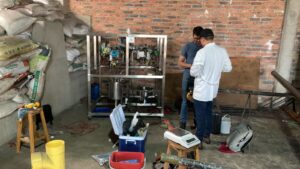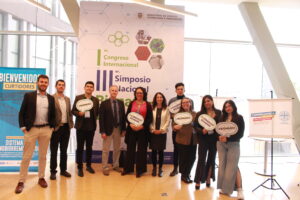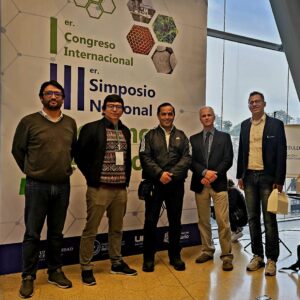Thanks to the cooperation with CATRIN, a prototype device utilizing iron nanoparticles will contribute to the cleaning of the Bogotá river
CATRIN’s cooperation with Universidad Central in Bogotá, which aims to contribute to the remediation of the Bogotá river in Colombia, contaminated by wastewater from its tanneries, has yielded first results. Thanks to a two-year project supervised by Jan Filip from CATRIN, a prototype technology for wastewater treatment has already been tested in Colombia in one of its tanneries. The chosen nano-remediation system is based on the use of iron nanoparticles, which is the expertise of researchers from Olomouc.
“During the interim evaluation of the project, we were able to unequivocally conclude that the system of efficient wastewater treatment works very well. Interesting results from this joint research were also presented as part of an international conference traditionally held on this topic by several private Colombian universities. We also agreed on further cooperation, when we will provide consultations to Colombian students. The aim for Colombian students and scientists is to learn how to use reactive iron nanoparticles and use them in real applications. Indeed, we have already had one experience in this regard, as one of the Colombian students completed a two-month internship at CATRIN,” said Jan Filip, leader of the Environmental Nanotechnologies group at CATRIN.
Representatives of both universities began to plan a possible cooperation about five years ago, when the vice-rector of Universidad Central visited the Regional Centre of Advanced Technologies and Materials, which is now part of CATRIN, and was very interested in water purification technologies deploying iron nanoparticles. Olomouc scientists presented their properties and application at a conference held by Universidad Central in Bogotá in connection with their visit for the first time in 2019.
The leather industry in the Cundinamarca Department and throughout whole Colombia creates many jobs, but at the same time has negative environmental impacts. The leather processes generate wastewater with a high content of organic substances, insoluble substances, phenols, chromium, nitro compounds and high salinity, which is discharged into the Bogotá River without proper treatment. Due to the complexity of the compounds contained in these wastewaters, it is necessary to combine several processes or treatment systems that allow them to be cleaned. The treatment systems used so far are costly and, in some cases, generate large amounts of sludge that is difficult to process.





